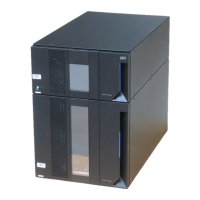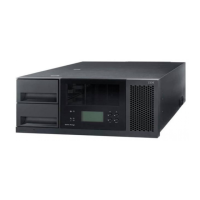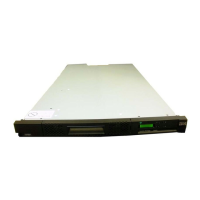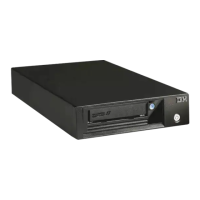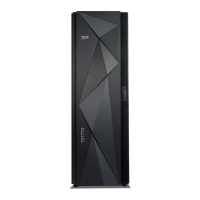scratch encryption policy
A means of identifying to an
ecryption-enabled tape drive which
scratch cartridges will be encrypted on
the next attempt to write from the
beginning of the tape. A scratch
encryption policy specifies what scratch
cartridges to encrypt; it does not indicate
which cartridges are currently encrypted.
When used with library-managed
encryption, a policy optionally lets you
control cartridge encryption by VOLSER
ranges in all logical libraries.
SCSI See Small Computer Systems Interface.
SCSI-2
A variation of the SCSI interface. See
Small Computer Systems Interface.
SCSI bus
(1) A collection of wires through which
data is transmitted from one part of a
computer to another.
(2) A generic term that refers to the
complete set of signals that define the
activity of the Small Computer Systems
Interface (SCSI).
SCSI address
See SCSI ID.
SCSI connector
One of the set of all female and male
connectors on the SCSI bus.
SCSI device
Anything that can connect into the SCSI
bus and actively participate in bus
activity.
SCSI element address
A value that defines a logical location in
the TS3500 Tape Library to the SCSI
interface. This logical address is
represented on the operator panel or IBM
System Storage Tape Library Specialist
Web interface as xxxx(yyyh), where xxxx
is a decimal value and yyyh is a
hexadecimal value. It is assigned by the
library and used by the server when the
server processes SCSI commands. The
SCSI element address is not unique to a
storage slot, drive, or I/O slot; it varies,
depending on the quantity of drives in
the library, whether the Capacity
Expansion feature is installed, and
whether an Expanded I/O Station is
included.
SCSI ID
The hexadecimal representation of the
unique address (0-F) that is assigned to a
SCSI device. This identifier would
normally be assigned and set in the SCSI
device during system installation.
search time
The average time it takes for a tape drive
to locate the starting point of a block of
data.
secure sockets layer (SSL)
Protocol for transmitting private
documents via the Internet. SSL uses a
cryptographic system that uses two keys
to encrypt data - a public key known to
everyone and a private or secret key
known only to the recipient of the
message. Many Web sites use the protocol
to obtain confidential user information,
such as credit card numbers. By
convention, URLs that require an SSL
connection start with https: instead of
http:.
sequential access
The processing of information on a tape
cartridge in a manner that requires the
device to access consecutive storage
locations (logical blocks) on the medium.
Sequential Access Device
In SCSI terms, a tape drive.
serial number
See volume serial number.
server A functional unit that provides services to
one or more clients over a network.
Examples include a file server, a print
server, and a mail server. The IBM
pSeries, IBM iSeries, HP, and Sun are
servers. Synonymous with host.
service clearance
Surrounding the TS3500 Tape Library, the
space required for an IBM Service
Representative to perform maintenance on
the unit.
service location protocol
(SLP) Protocol that provides a framework
to allow networking applications to
discover the existence, location, and
configuration of networked services in
enterprise networks. With SLP, the user
only needs to know the description of the
Glossary 249
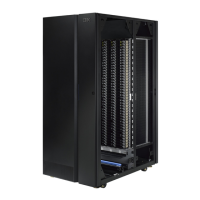
